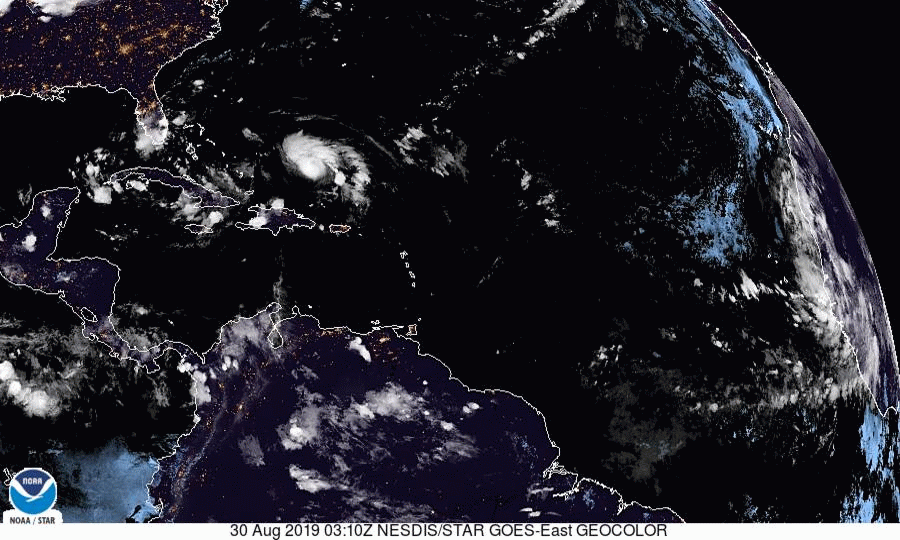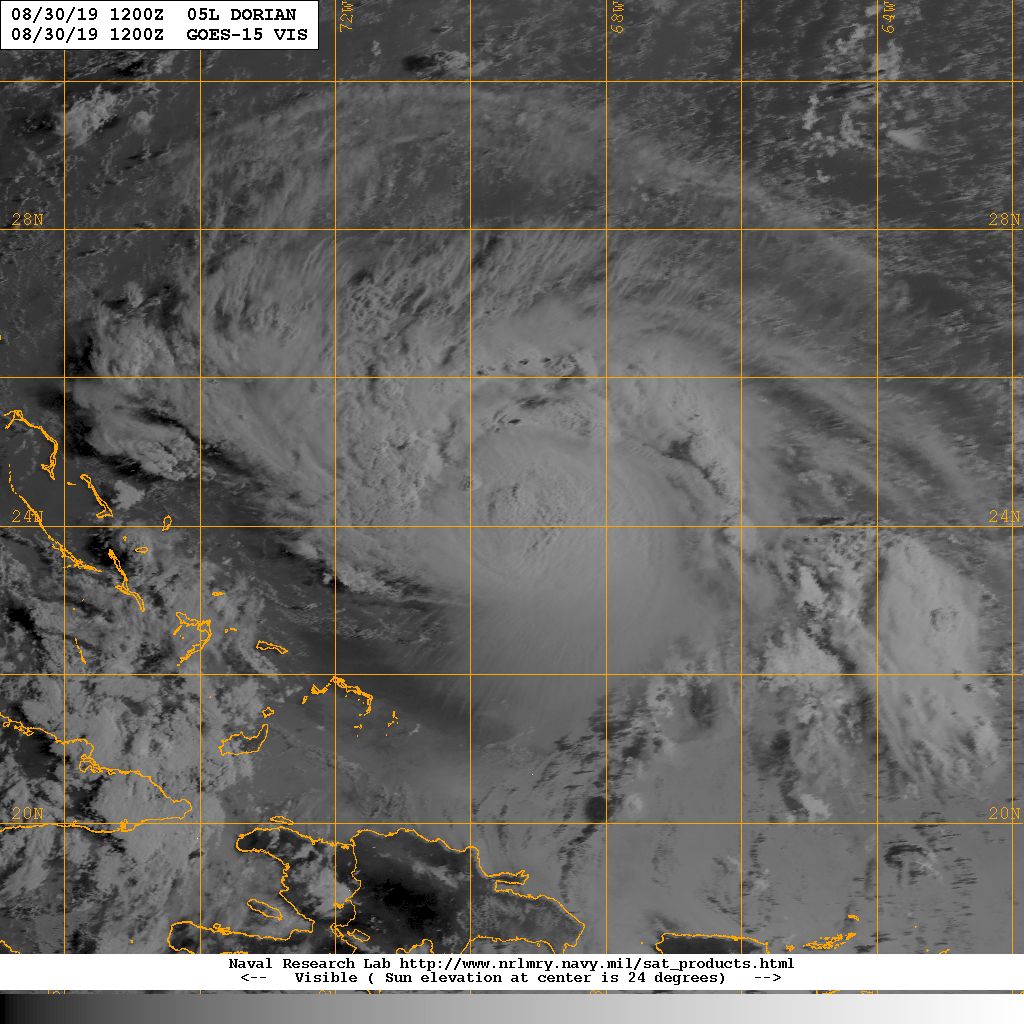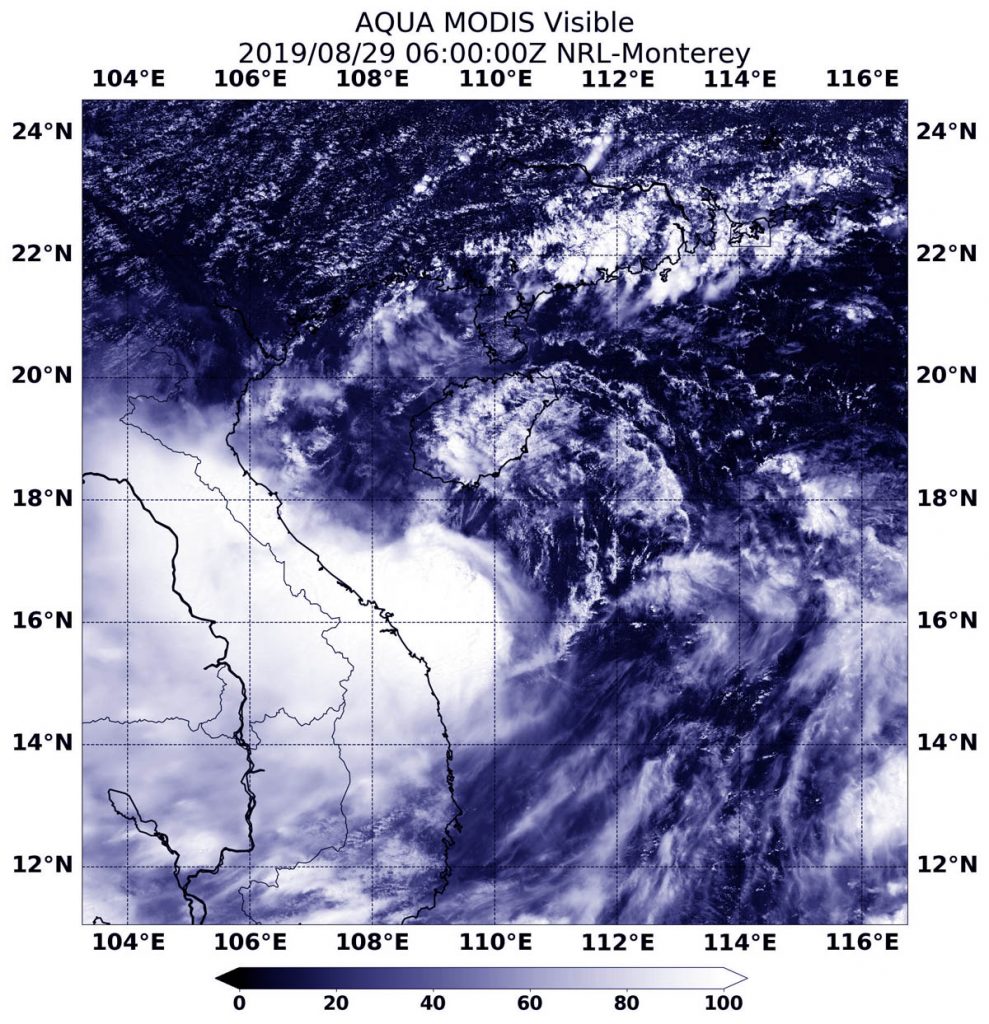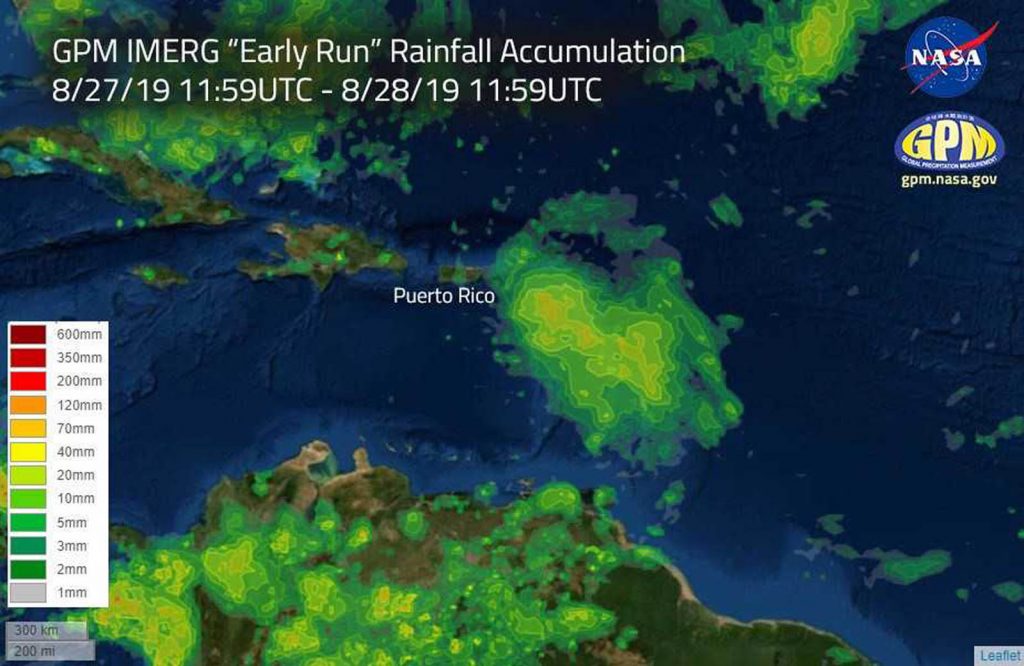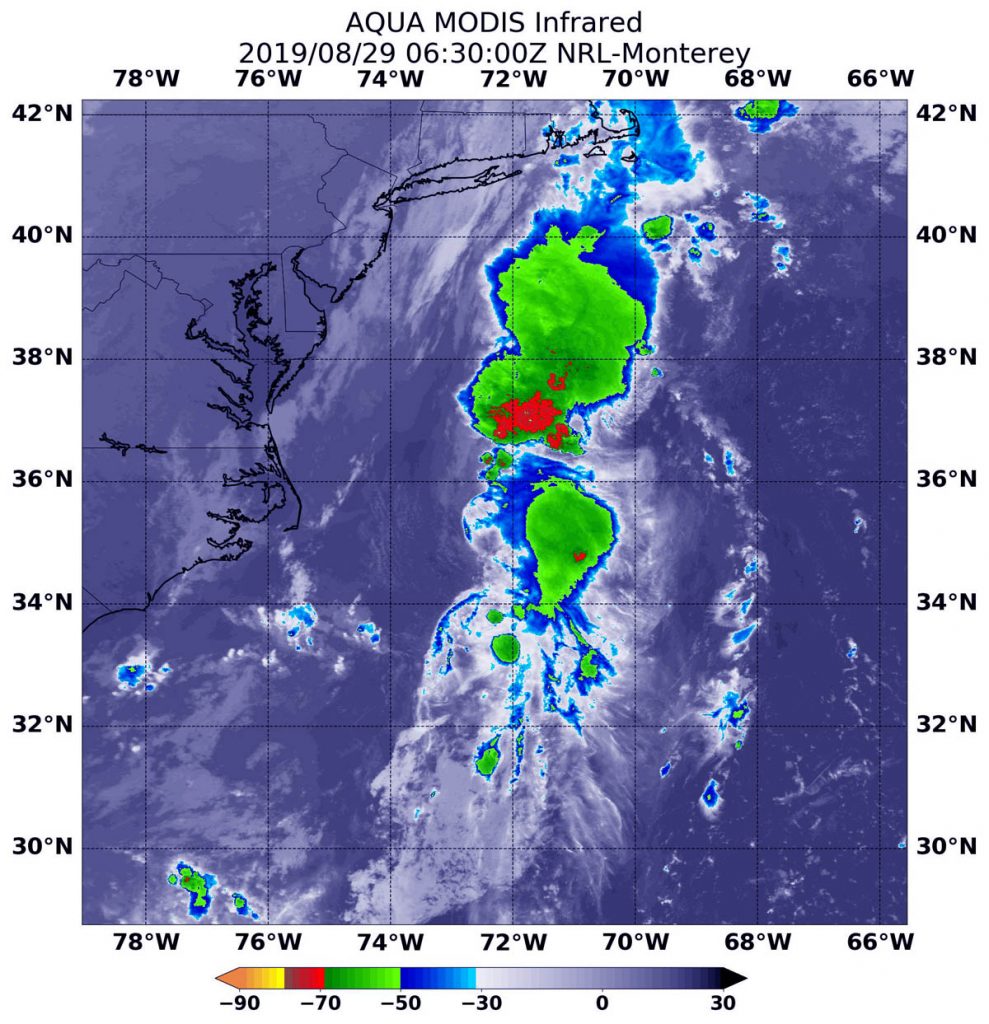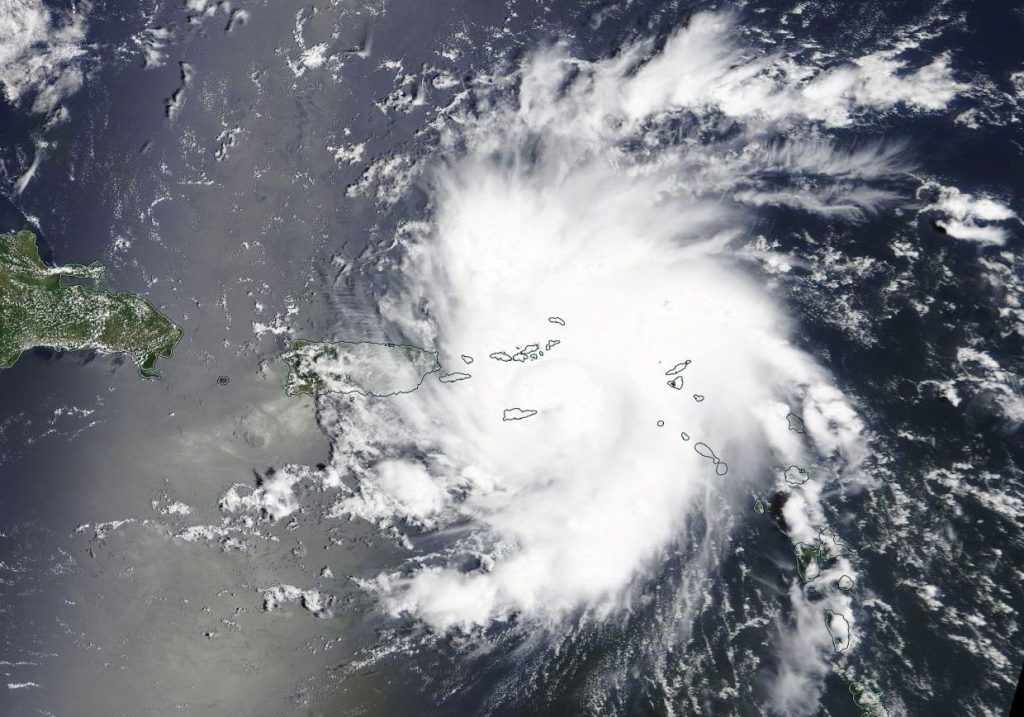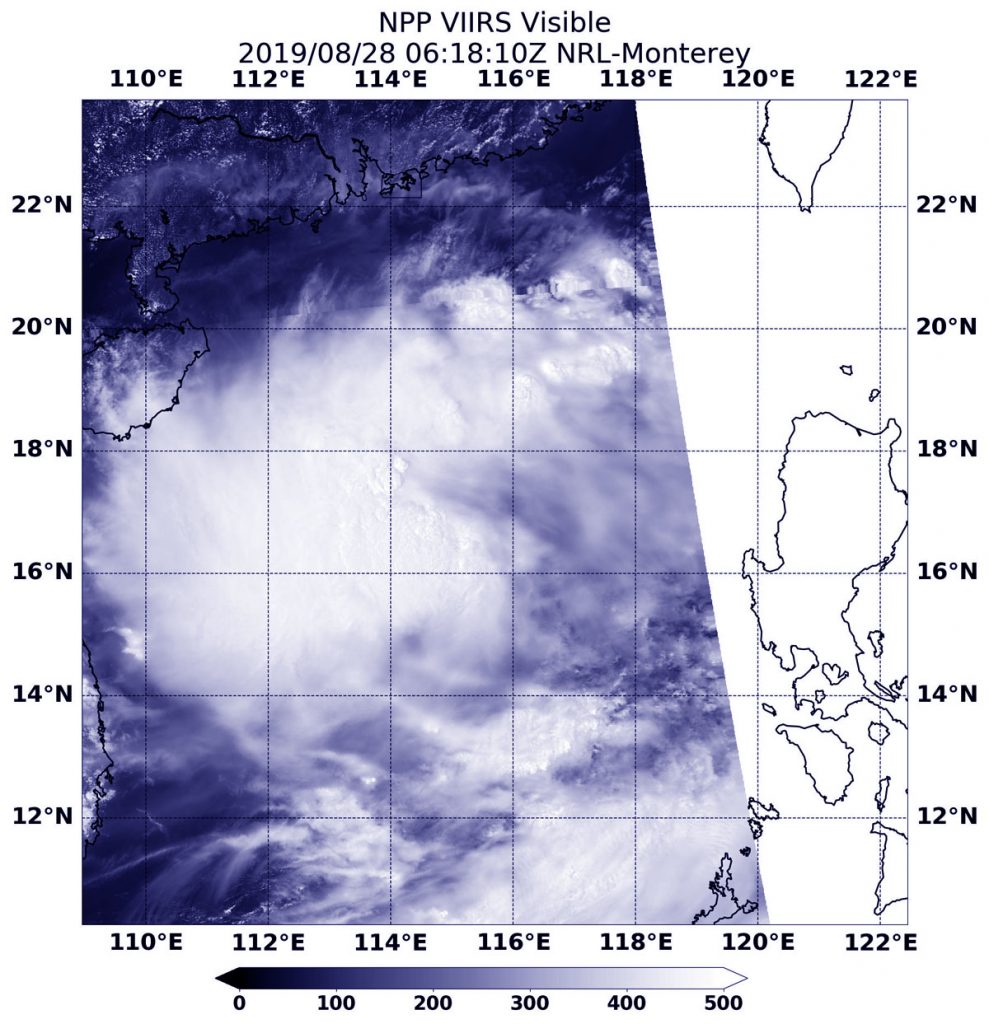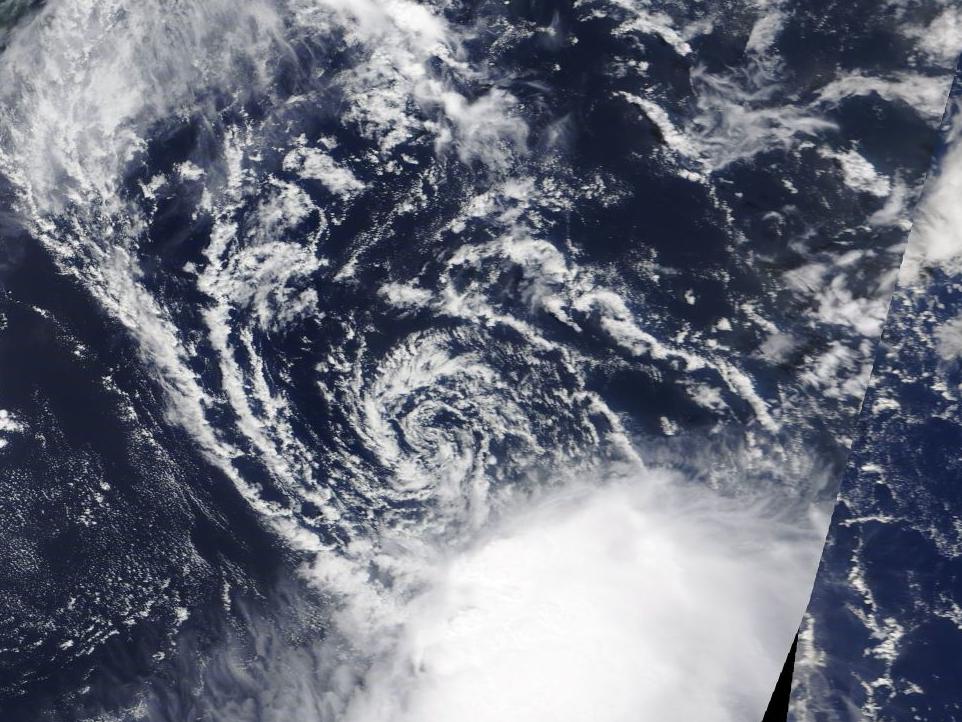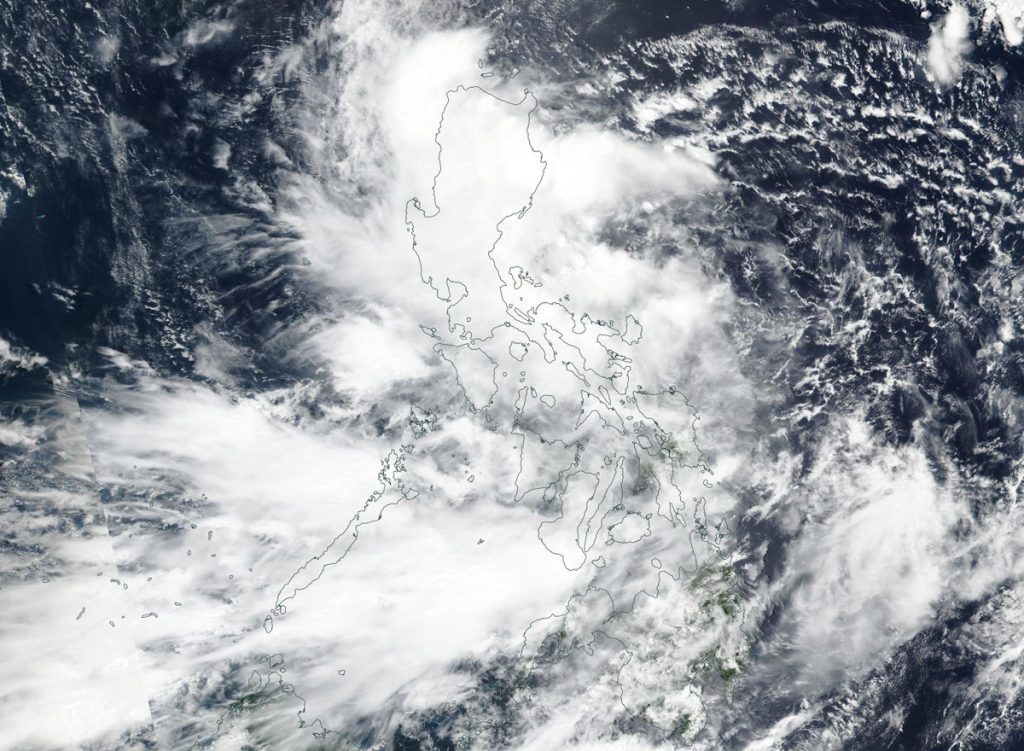Aug. 30, 2019 – Update #2 – Hurricane Dorian Marching Slowly Across Atlantic
The National Hurricane Center (NHC) in Miami reports that an Air Force plane is finding Dorian a “little stronger” as of the 8:00am EDT advisory put out today, Aug. 30, 2019. Data from an Air Force Reserve reconnaissance aircraft indicate that maximum sustained winds have increased to near 110 mph (175 km/h) with higher gusts. That is in keeping with what weather forecasters are predicting for the storm.

On Aug. 29, 2019, NASA’s Aqua satellite captured this infrared image with the AIRS instrument which analyzed cloud top temperatures in the storm. The coldest temperatures AIRS found were in the center of the storm where the strongest thunderstorms are found. These storms were as cold as or colder than minus 63 degrees Fahrenheit (minus 53 degrees Celsius). NASA research has found that cloud top temperatures that cold indicate strong storms with the potential to generate heavy rainfall.
At 8:00 am EDT (1200 UTC), the NHC reported that “the the center of Hurricane Dorian was located near latitude 24.2 North, longitude 69.4 West. Dorian is moving toward the northwest near 12 mph (19 km/h), and this motion is expected to continue through today. A slower west-northwestward to westward motion is forecast to begin tonight and continue through the weekend. On this track, Dorian should move over the Atlantic well east of the southeastern and central Bahamas today, approach
the northwestern Bahamas Saturday, and move near or over portions of
the northwestern Bahamas on Sunday.”
Dorian is expected to strengthen during the next few days, and become a major hurricane later today (Aug. 30). Dorian is likely to remain an extremely dangerous hurricane while it moves near the northwestern Bahamas and approaches the Florida peninsula through the weekend.
Currently hurricane-force winds extend outward up to 25 miles (35 km) from the center, and tropical-storm-force winds extend outward up to 105
miles (165 km). Yesterday the barometric pressure inside the storm was 991 mb. Today the minimum central pressure just reported by the Air Force reconnaissance plane was 972 mb (28.70 inches). The lower the barometric pressure in hurricanes, the higher the wind speeds— and the more dangerous the storm.
Hurricane conditions are possible within the watch area by Sunday, with tropical storm conditions possible by Saturday night or Sunday morning.
A life-threatening storm surge will raise water levels by as much as 10 to 15 feet above normal tide levels in areas of onshore winds in the northwestern Bahamas. Near the coast the surge will be accompanied by large and destructive waves.
Dorian is expected to produce the following rainfall accumulations this weekend into the middle of next week:
Northwestern Bahamas and coastal sections of the Southeast United States…6 to 12 inches, isolated 15 inches.
Central Bahamas…1 to 2 inches, isolated 4 inches.
This rainfall may cause life-threatening flash floods.
Swells are likely to begin affecting the east-facing shores of the Bahamas and the southeastern United States coast during the next few days. These swells are likely to cause life-threatening surf and rip current conditions.
For updated forecasts, visit NOAA’s NHC: www.nhc.noaa.gov
By Lynn Jenner
NASA’s Goddard Space Flight Center

